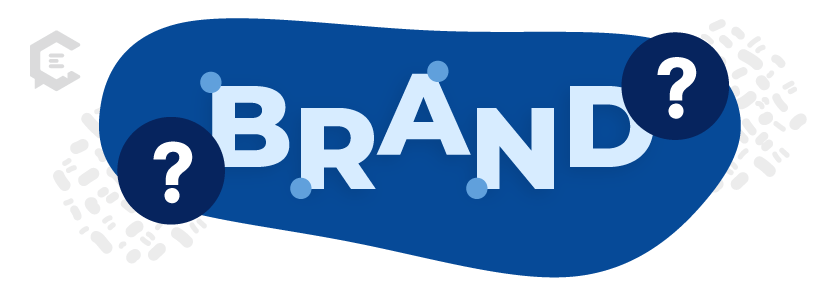A successful content marketing strategy is essential in today’s business environment. According to Content Marketing Insitute and MarketingProfs’ 2023 B2B Content Marketing Benchmarks, Budgets & Trends report, 71% of content marketers said content marketing has become more important to their business over the last year.
So, if we all know how important content is, why are so many companies struggling to produce high-quality content consistently?
Maintaining a steady stream of great content is hard. And as the industry expands and consumer expectations grow, keeping up is becoming more difficult. So how can you overcome these challenges and help your company into the top-performing spots?
We’ve compiled a list of the top seven reasons most companies fail in their efforts to consistently produce effective content so that you can identify your own team’s weaknesses and overcome them.
1. You don’t know your brand.
Without its brand, your company is simply another generic option in a sea overflowing with overlooked options. Having a consistent brand makes you stand out, offers a sense of trust and reliability for your consumers, and sets the appropriate expectations.
Consider Tom’s Shoes. Their footwear is comfortable, but the same could be said for a thousand other companies. People love Tom’s because the company gives back to communities in need. And their blog is filled with stories of these humanitarian efforts. If Tom’s ever decided to stop giving — or if they stopped communicating their efforts — they would quickly lose customer loyalty.
The same is true for any company, regardless of your mission. If your content doesn’t speak to that mission, your customers won’t feel the connection you need to succeed.
When defining your brand (and writing to it), consider your company’s…
- Mission
- Goals
- Core values
- Brand guidelines
All of the content you create should speak to each of these.
2. You don’t know your customer.
If you’re not speaking directly to your consumers, then it doesn’t matter how often you publish new content or how wonderful that content is. It’s not doing you any good.
Everyone is different. We all have different interests, habits, needs and tastes. Writing that targets the generic “everyone” won’t appeal to anyone. Your audience won’t seek it out. They won’t share it. If you want to reach your target customers, you need to consistently create content that speaks to their interests and needs.
When creating content, you should:
- Choose topics your customers are likely to be interested in.
- Write in a manner that will appeal to your customers.
- Provide information your customers want to learn.
- Publish content on platforms your customers frequent.
To accomplish this, you first need to get to know your consumers. Who are they? What are their interests? What are their biggest concerns? What are their hobbies? Where do they learn about the products and services they buy? If you can’t answer every one of these questions, your content is already failing you.
3. Your quality is inconsistent.
I can still remember that moment when, 50 pages into the latest book by my favorite series, I realized I didn’t want to read any further. The story was just as exciting as ever. I still loved the main character. But something felt off. It didn’t feel like my series. And then it hit me. The sentences were choppier. The word choice was less refined. The metaphors felt forced. The writing wasn’t as good, so I gave up. And I’ve never gone back to that author since.
Your readers also expect a certain level of quality in the work you produce. If you fail to deliver, or if your quality is inconsistent, your readers will lose faith. They might just walk away from you and never come back.
Every piece of content your team produces, regardless of the channel or audience, should be consistently of the highest quality.
That means:
- It’s well-written and error-free
- It’s tailored to the medium (blogs should be meaty, tweets short, etc.)
- Text is broken up with plenty of relevant images, videos, and whitespace
- You’re writing at an appropriate readability level for your audience
- You are knowledgeable about your subject, and it shows
4. You aren’t offering value to your readers.
There is more content in the world than anyone could read in a lifetime, and content creators add more every second. Readers have to be discriminating. If the content you publish does not offer direct value to your consumers, readers will — necessarily — skip it.
But this is good news: Thinking about providing value is a great way to come up with new content ideas! Consider your industry. What do your consumers want to know about? What type of posts might interest them?
- Is there something you could teach them to do for themselves? Bonus: how-to’s are highly shareable.
- Can you explain a difficult concept or process in a way they’ll understand? Or break it down into an infographic or another easy-to-follow medium?
- Can you tell a customer story that your readers will easily relate to?
The possibilities are endless. The key is to always consider your audience (see point #2) and address their specific needs.
5. You write like a salesperson.
If your content’s only goal is to sell your products, it won’t be long before your customers start to react to each new email you send the same way they do when they spot the salesman approaching them at the used car lot. Sales content is great for commercials and banner ads, but content marketing is about education, information, and connection. Selling doesn’t always accomplish those things.
Content marketing should work much the same as a brand commercial (with no CTA), where your goal is to build a feeling, create a connection, and promote name recognition. If done right, the increased brand recognition will lead to sales, so the commercial never has to actively sell. If your content marketing efforts are engaging, it will help build a strong relationship with your readers, which can lead to sales.
6. Your efforts are too narrow.
Twenty years ago, a well-placed TV ad could reach the majority of your consumers. But today, we have seemingly endless options for where and how we receive media and information. If your content strategy is still focused on a small handful of channels, you’re missing valuable opportunities.
With over 2.9 billion users worldwide, Facebook is an ideal way to reach new customers — but that also means huge competition for their attention. Other social media outlets may be more effective, but only if you understand your audience.
A recent study shows that 95% of U.S. adults between 18-29 use Youtube. And if you’re catering to that group, you have to consider TikTok. 40% of Gen Z uses it as their search engine.
Don’t limit yourself. Seek out as many channels as you can handle — and that are relevant to your brand.
As you build your multi-channel content approach:
- Target channels your consumers use
- Tailor your content for each channel
- Repurpose your content so that you can get the most mileage out of each original idea
7. You forgot to pace yourself.
We’ve covered a lot of ground so far, and hopefully, you’re ready to revamp your content strategy and start pumping tons of quality, original work out into the world. That’s fantastic — but take a breath and slow it down.
Most content writers have, at one point or another, felt that surge of creative energy and thrown themselves head-first into a project, only to exhaust every original idea two weeks into the endeavor. Consistency means regularly publishing over time. If you don’t pace yourself, you’ll burn out long before you realize that goal.
To make sure you can continue producing original ideas long-term:
- Create a content calendar
- Jot down every idea, and space them out
- Plan for each channel you’re targeting
- Set aside specific days each month to generate new content ideas. Don’t wait until you’ve published everything you have
Try, try again to consistently make great content.
Anyone can produce content regularly, but continuously producing quality content that actively engages your customers takes effort. Even if you plan ahead and firmly understand your customer needs, you may not succeed every time.
But, if you’re constantly learning and tweaking — even when results are less than desirable — your efforts will be rewarded by new leads, stronger customer loyalty, and ultimately greater success.
And if you end up needing any help at all, ClearVoice has your back. We have over a decade of experience helping companies of all shapes and sizes. Check out our managed content creation services here or talk to a strategist today.







